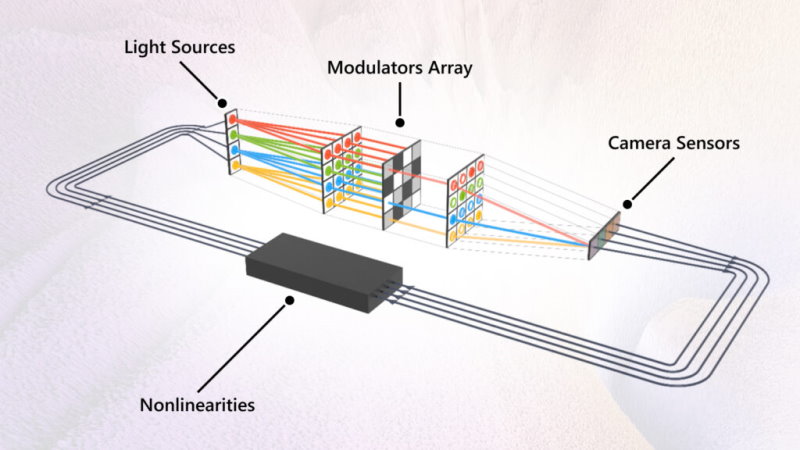
Microsoft turns to photons to solve complex optimization problems
Microsoft has been working on a novel type of computer that combines analog optical components and digital electronics to process data. Dubbed the Analog Iterative Machine (AIM), it’s designed to solve complex optimization problems that traditional computers struggle with. Though still a research project, Microsoft is actively engaging with external partners to explore the performance of the technology in real-world scenarios.
AIM addresses two simultaneous trends, says Microsoft. First, it sidesteps the diminishing growth of computing capacity per dollar in digital chips. Second, it overcomes the limitations of specialized machines designed for solving optimization problems. Despite over two decades of research and substantial industry investment, such unconventional machines have a limited range of practical applications because they can only address optimization problems with binary values. As it turns out, it’s hard to map real-world problems at scale to the binary abstraction.
With AIM, the Microsoft team has introduced a more expressive mathematical abstraction called quadratic unconstrained mixed optimization (Qumo), which can represent mixed – binary and continuous – variables. AIM’s photonic part is perfectly suited to handle continuous-value data, ultimately beating binary computers by an estimated factor of 100 for problems such as the classic Traveling Salesman and related problems.

The photonic computing power derives from the interaction between the light particles and the matter through which they propagate, allowing for linear operations such as addition and multiplication, which form the basis for optimization applications. For instance, camera sensors add up incoming photons and generate the equivalent amount of current. Beyond optical technologies for linear operations, various other electronic components prevalent in everyday technologies can perform non-linear operations that are also critical for efficient optimization algorithms.
In optimization problems, finding the optimal solution is akin to discovering a needle in a vast haystack. The Microsoft team has developed a new algorithm that’s highly efficient at such needle-finding tasks. Crucially, the algorithm’s core operation involves performing hundreds of thousands or even millions of vector-matrix multiplications – the vectors represent the problem variables whose values need to be determined while the matrix encodes the problem itself. These multiplications are executed swiftly and with low energy consumption using commodity optical and electronic technologies.
Microsoft is already working with Barclays Bank to test AIM for tracking how batches of transactions are settled. Interbank transactions are settled at so-called clearing houses, which process hundreds of thousands of transactions on a daily basis. As banking transactions scale, the settlements take increasingly longer to be completed – a real-world optimization problem that Barclays would love to tackle.
A cloud-based service that simulates the AIM algorithm will be made available to a limited number of partners.





